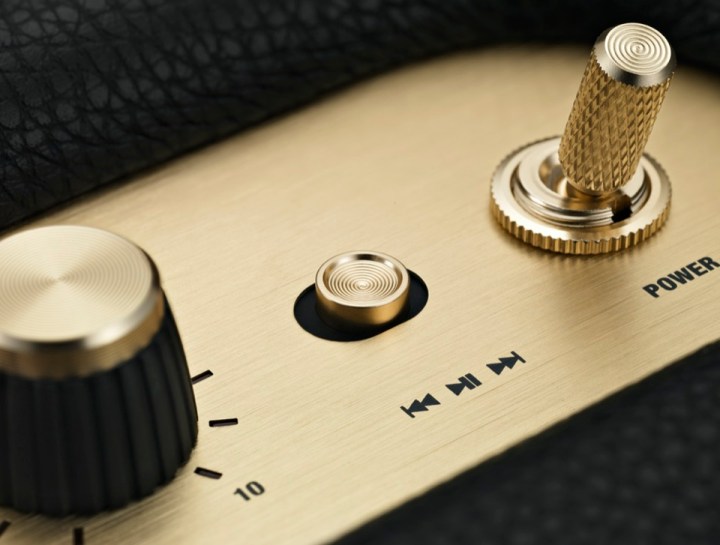Marshall’s line of in-home wireless speakers has always aimed to bring powerful sound and elegant design to your bookshelf, and the third generation available now carries that just a bit further into the modern day. The new lineup features the small space-friendly Acton III, the mid-sized Stanmore III, and the flagship Woburn III speakers.
Everything listeners love about the Marshall speaker line is still here. There’s still decent power on deck with 15-watt tweeter amps on all models, and 30-watt, 50-watt, and 90-watt setups for each of the main drivers on the respective speaker models. The Woburn also folds in dedicated mid-frequency drivers for more fullness in general. There’s also solid integration via Bluetooth aptX codec support, plus an array of wired inputs. But now Marshall is putting an emphasis on a few additional modern specs.

For starters, there’s a revitalized focus on eco-friendly manufacturing. This is nice to see for a category like Bluetooth speakers and headphones, which are churned out in such high volume that material manufacturing has had quite a footprint in recent years. In the Acton, Stanmore, and Woburn III speakers, Marshall has shifted to nearly PVC-free material choices, building these speakers with vegan fabrics and a 70% recycled plastic makeup.
The other key update is the wider soundstage; more specifically that the tweeters in each model are angled more dramatically outward and the waveguides have been updated. This allows Marshall to achieve a much wider cast in sound projection, which, when paired with the already impressive dedicated amps and woofers seen in the second generation, make for pretty impressive detail and fullness.
There’s also a Placement Compensation feature that automatically aims to correct for nearby reflective surfaces to ensure that the sound carries without unwanted resonance. While this kind of tech can be hit or miss, the new line of speakers will at least do their best to account for resonance without listeners having to activate anything out of the box.

Marshall is also baking in new automatic over-the-air updates alongside next-generation Bluetooth 5.2 — an attempt to “future-proof” the tech in these speakers to keep up with evolving Bluetooth versions. Round this all out with the classic bookshelf-friendly design, playful aesthetic choices we’ve seen on previous generations, including the textured power toggle switch, and you’ve got a unique-looking speaker.
The Acton III drops at $279, the Stanmore III comes in at $369 (both available in black, cream, or brown colors), and the Woburn III is $579 (in black or cream) — all available directly at Marshall Headphones.
Editors' Recommendations
- Sony’s ULT Power Sound headphones and speakers go big on powerful bass
- Klipsch takes on Marshall with three new portable and rugged Bluetooth speakers
- Tivoli Audio’s Model Two Digital speaker abandons terrestrial radio
- Skullcandy’s new Bluetooth speaker lineup boasts big battery life for $30 to $80
- Klipsch cranks up the karaoke with its first wireless party speakers




